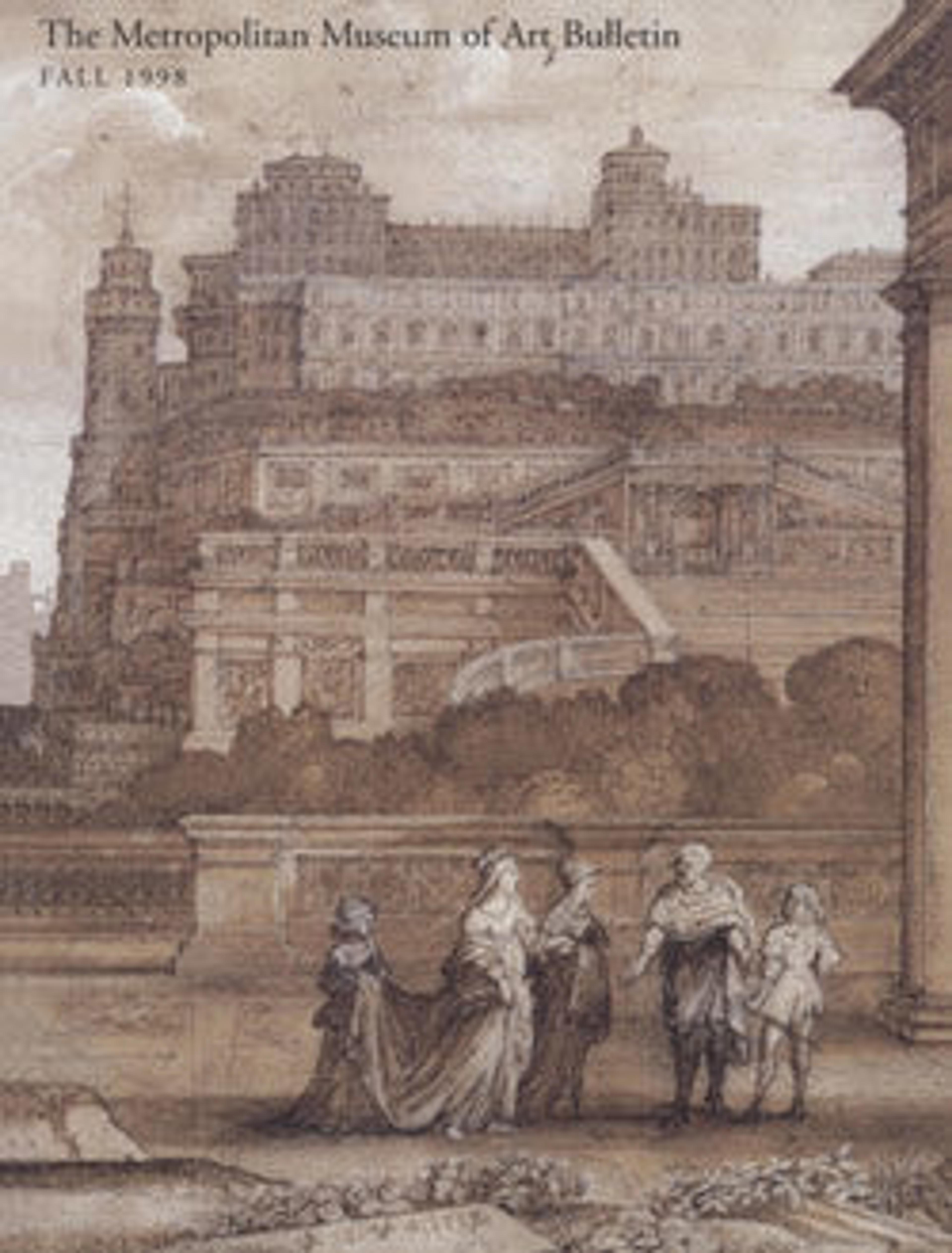Tall Clock
Over nine-feet-tall, this majestic clock is among the finest and most aesthetically significant examples produced in North America during the Federal period (1790–1825). The manufacture of such pieces was a joint venture between the clockmaker, the cabinetmaker whom he employed to furnish the case, and the patron. In this instance we are able to identify with precision only the man responsible for the works, James Doull of Charlestown, Massachusetts, whose name is painted on the appropriately oversized thirteen-inch dial. The brilliantly veneered and inlaid case, although unsigned, is quite likely by Thomas Seymour (1771–1848) of Boston, whose signature-style lunette inlays of shaded maple border the door and the lower part of the case; they are also used to face the plinths below the brass finials and the reeded and richly carved, engaged quarter columns of curled maple. The clock dial depicts charmingly naive versions of the personifications of the four seasons—standard motifs on imported English painted dials of the period—and a portrait in the tympanum of a young girl in an idealized landscape. These images may be by John Penniman (active 1806–28), an artist documented as having decorated dials for the renowned Willard family of clockmakers in nearby Roxbury and Grafton.
Artwork Details
- Title: Tall Clock
- Maker: Case attributed to Thomas Seymour (1771–1848)
- Maker: Possibly with John Seymour (active ca. 1794–1816)
- Maker: Works signed James Doull
- Decorator: Dial possibly painted by John Ritto Penniman (American, Milford, Massachusetts 1782–1841 Baltimore, Maryland)
- Date: 1805–10
- Geography: Made in New England, Boston, Massachusetts, United States
- Culture: American
- Medium: Mahogany, mahogany veneer,
maple with white pine - Dimensions: 111 3/4 x 21 1/4 x 9 3/4 in. (283.8 x 54 x 24.8 cm)
- Credit Line: Purchase, Anthony W. and Lulu C. Wang Gift, 1998
- Object Number: 1998.12
- Curatorial Department: The American Wing
More Artwork
Research Resources
The Met provides unparalleled resources for research and welcomes an international community of students and scholars. The Met's Open Access API is where creators and researchers can connect to the The Met collection. Open Access data and public domain images are available for unrestricted commercial and noncommercial use without permission or fee.
To request images under copyright and other restrictions, please use this Image Request form.
Feedback
We continue to research and examine historical and cultural context for objects in The Met collection. If you have comments or questions about this object record, please complete and submit this form. The Museum looks forward to receiving your comments.
